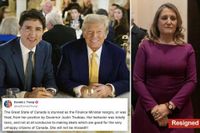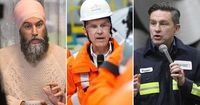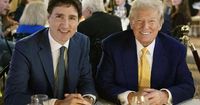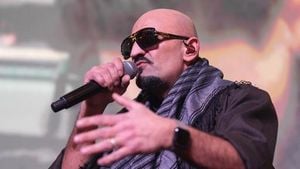Hamilton voters are facing an unprecedented snap election campaign that reflects significant shifts in the Canadian political landscape. In a stunning turn of events, the Liberal Party, under the new leadership of Mark Carney, is gearing up for a federal election only months after the resignation of former Prime Minister Justin Trudeau, who stepped down earlier this year amid declining popularity and political chaos.
Reports indicate that Carney is planning to call a snap federal election by the end of March 2025, aiming for a vote in late April or early May. The political arena is buzzing as citizens prepare for a campaign likely to resemble the recent provincial elections, casting a shadow over voter fatigue. The urgency of these elections is compounded by changes both at home and across the border, notably the evolving relationship with the United States.
The backdrop of these elections is characterized by Donald Trump's presidency, whose unpopularity has affected perceptions of American leadership in Canada. Trump's administration has seen a crucial turning point with increasing tariff threats against Canada, prompting a political rallying among Canadian voters — a phenomenon that could heavily influence the upcoming federal elections. According to Clifton van der Linden, a MacMaster University professor and CEO of Vox Pop Labs, many Canadian voters are currently reassessing their political allegiances, largely due to the changing landscape introduced by the new American policies.
As of the latest polls, the Liberal Party and the Conservative Party, led by Pierre Poilievre, are neck-and-neck, each holding slightly above 30 percent in popular support. Van der Linden notes, “If we were having this conversation at the end of last year, it would have seemed a fait accompli that the Conservatives would be taking office.” Yet, with Carney’s recent ascension, political dynamics have transformed considerably.
Mark Carney is not alone in his efforts; NDP Leader Jagmeet Singh has also engaged with Hamilton voters, visiting this month to emphasize his commitment to combat the U.S. tariffs on steel, a critical issue in a city with almost 9,000 steel-related jobs.
National conversations around tariffs and trade relations will likely dominate this election cycle. Singh's message resonated with voters when he earned an endorsement from the United Steelworkers union, further heightening the importance of protecting steel jobs and manufacturing in the region.
In Hamilton, local concerns also weigh heavily on the electorate's minds, particularly the ongoing housing crisis. The federal government, under the previous Liberal administration, had promised significant funding directed towards housing initiatives. Specifically, the Liberal federal government’s “housing accelerator fund” was hoped to deliver tens of millions for affordable housing in Hamilton. However, Poilievre’s plan to eliminate this fund and cancel the sales tax on newly-built homes priced under a million could significantly impact potential government support for housing projects.
In addition to housing issues, Dofasco, one of the city’s largest employers, has been promised nearly $900 million in grants and loans to initiate a decarbonization project. Developing clean industry jobs could be a hot-button issue for voters, alongside the significant $3.4 billion funding promise for the off-and-on-again light rail transit line. Yet the long-awaited federal funding contribution agreement for the LRT project has yet to be finalized, raising questions about the party’s commitment to infrastructure development.
As parties scramble to nominate candidates, the competitive atmosphere in Hamilton is palpable. The Hamilton West—Ancaster—Dundas riding stands as the only open seat in the city, following the departure of Liberal cabinet minister Filomena Tassi who announced she wouldn't seek re-election. The Conservatives quickly shifted into high gear, recruiting Erika Alexander, the granddaughter of political legend Lincoln Alexander to contest this seat, while speculation continues amongst Liberal insiders on who will fill Tassi's shoes.
In the Hamilton Mountain riding, incumbent Liberal Lisa Hepfner faces a formidable challenge from longtime NDP provincial representative Monique Taylor, who is venturing into the federal arena after a spirited provincial campaign. The political makeup of the mountain might reshape dramatically, and potential Conservative candidates remain unknown.
Further complicating matters in Hamilton East—Stoney Creek is Liberal incumbent Chad Collins, who publicly called for Trudeau’s resignation last year, now seeking re-election under a new party leader. Former Conservative candidate Ned Kuruc has been actively canvassing the area, with support from former Liberal MP and city mayor Bob Bratina, who has endorsed the Conservative candidate.
Amid all this, northern Canada isn’t the only region adjusting to political turbulence. Recent musings from Trump regarding Canada potentially becoming the 51st state have stirred significant discourse across the border and beyond. Initially stemming from a private conversation with Trudeau last November at Mar-a-Lago, the idea has gained traction online, leading to both mockery and serious reactions.
This narrative of absorption raises questions of Canadian sovereignty and ignites a passionate discourse among citizens. While many dismiss the idea as seriously exaggerated, there’s a noteworthy uptick in apprehension surrounding the ramifications of American politics on Canadian soil.
The sentiment has been echoed in social media analysis revealing spikes of chatter around Canada’s statehood, driven largely by Trump’s provocations. As one commentator pointed out, reactions have alternated between skepticism and fear, mirroring concerns over potential infringements on sovereignty.
Even with the Canadian public largely skeptical about becoming the 51st state, political analysts note that changes in perception are already taking root amongst the electorate, emphasizing a unique dynamic as Canada prepares for pivotal elections. The interplay between domestic issues, international pressures, and candidate strategies will shape the decisions of Hamilton voters in the approaching election season.






